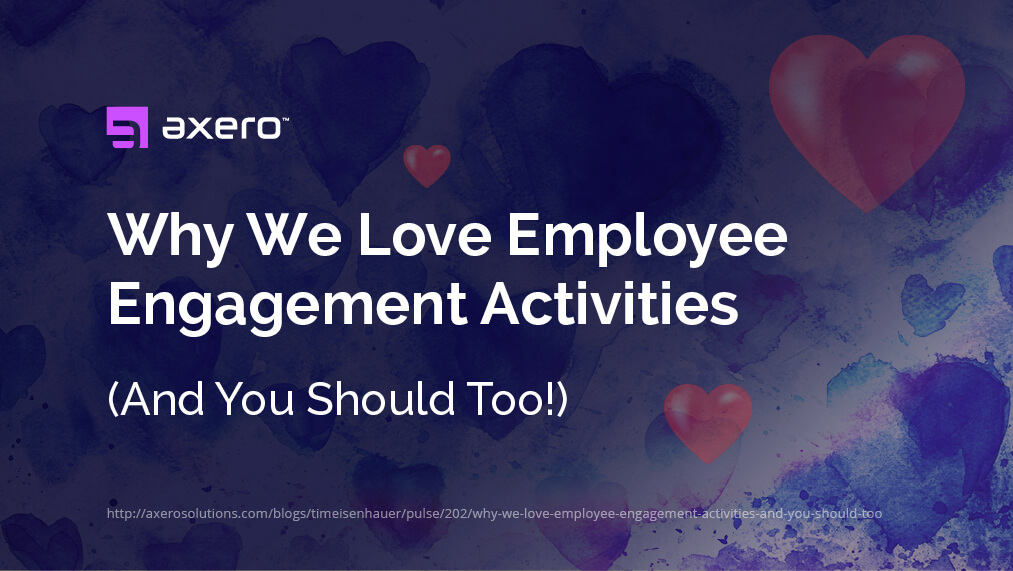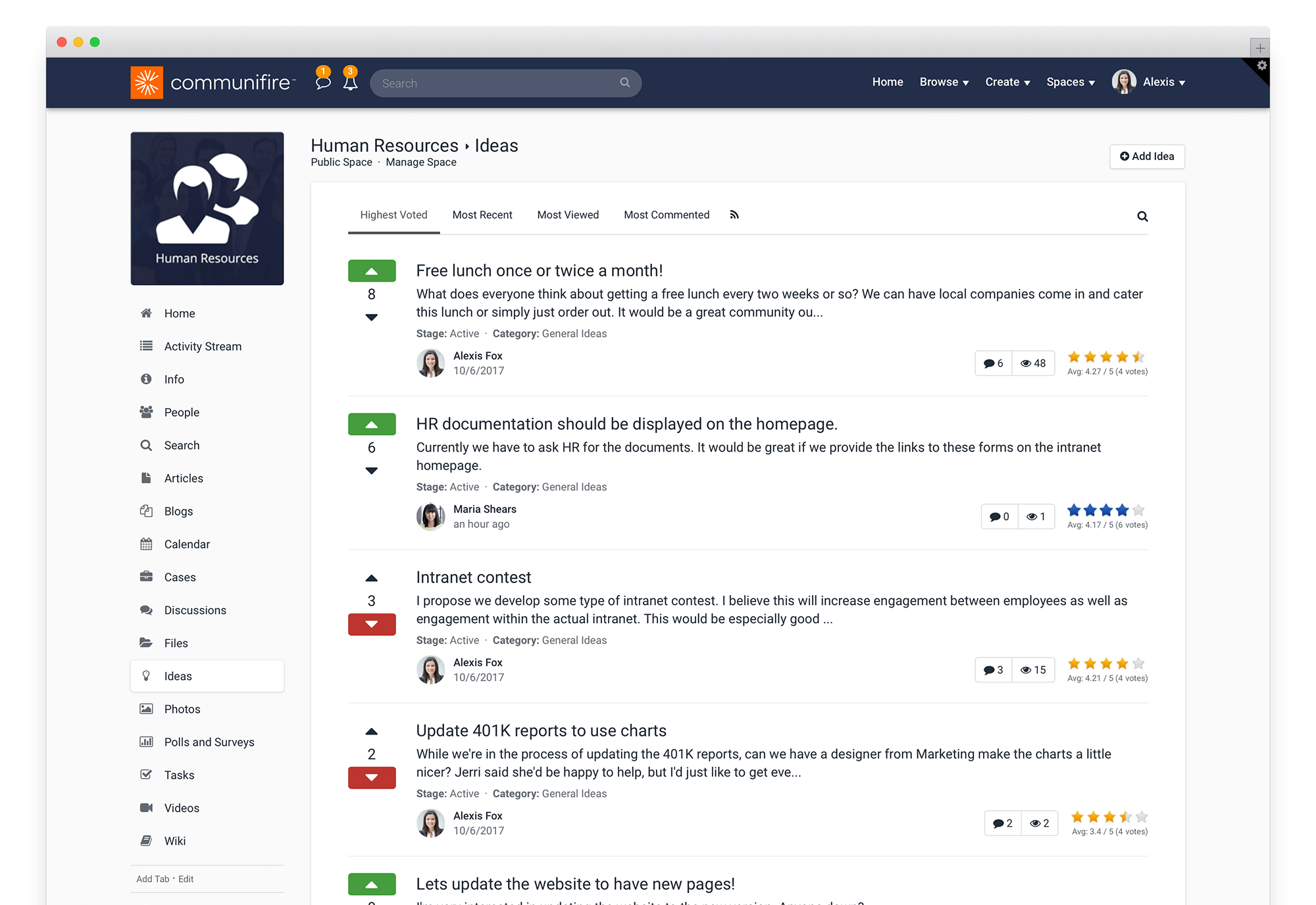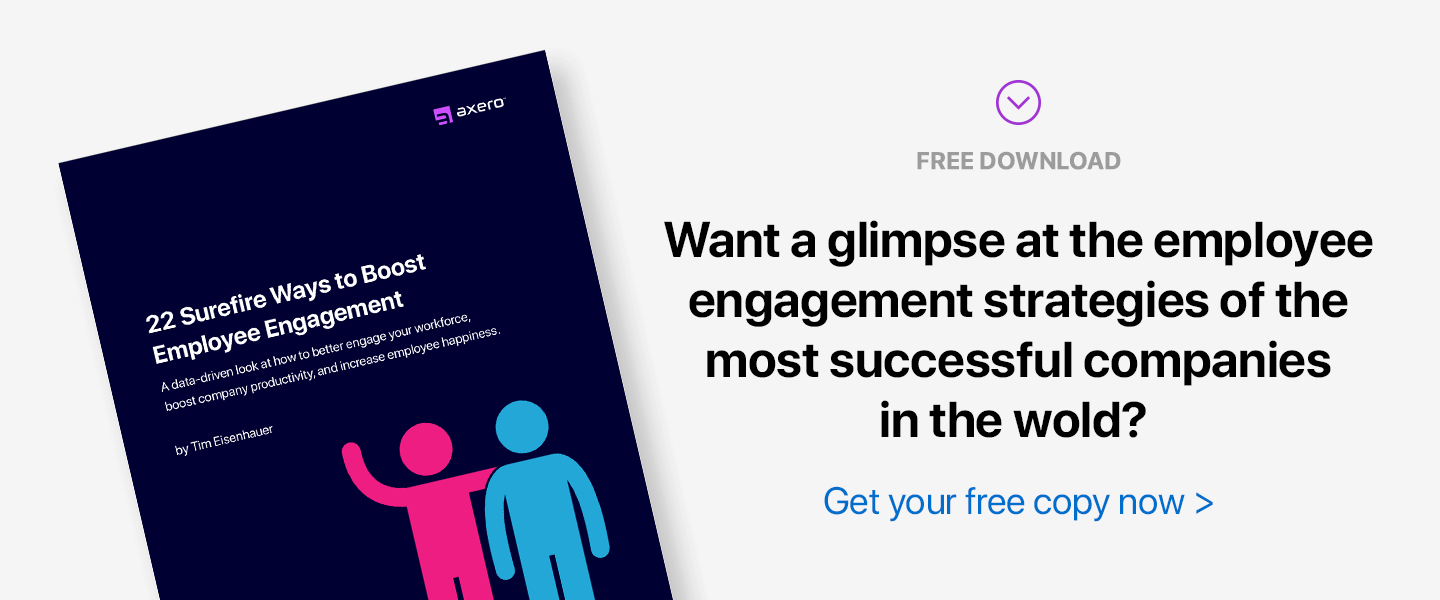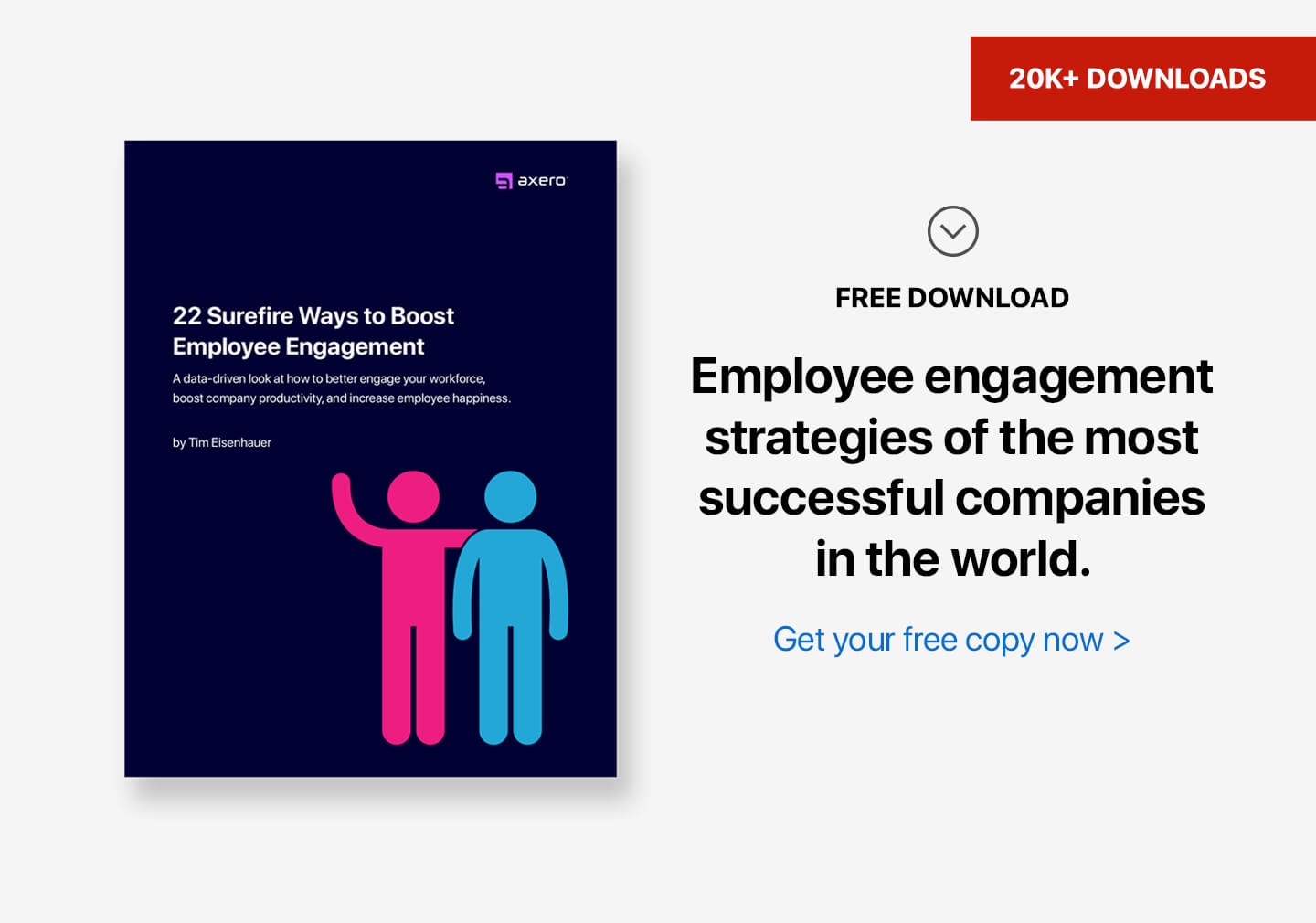Forward-thinking businesses are constantly making strides towards improvement, so no matter how well a company runs, there are always things that can be done to streamline performance, increase productivity, and ensure as few headaches as possible. One thing that often get overlooked, however, is the importance of engaging your employees.
Sometimes, it can be difficult to tell whether or not levels of employee engagement are dwindling, but once you really start paying attention, the writing is on the wall. A lack of employee engagement initiatives can come with countless other issues, including falling productivity, less bright ideas/solutions, and a general air of discomfort in the office. Many business leaders allow this to progress until it’s too late to fix things, in which case a “snowball effect” often occurs.
Maintaining high employee engagement levels in your organization can be a challenge. And increasing employee engagement levels isn’t any easier. However, there are things you can do, steps you can take, ideas you can try, to improve levels of engagement in your organization. One of the best and most effective options is to incorporate employee engagement activities into the workday.
In order to make the necessary changes to increase engagement in your organization, you’ll need to identify the reasons why your company should be investing in employee engagement activities in the first place.
Here are 10 signs you should invest in employee engagement activities today.
1. Lack of employee retention.
Employee retention is important, as onboarding can be a lengthy, expensive process. The less hiring you have to do, the better … which is why employee engagement is so important. When employees don’t feel engaged, they’re more likely to quit.
2. Poor performance.
A drop in performance can result from many things, but it’s commonly associated with a lack of employee engagement. Engaged employees typically put forth as much effort as possible to ensure quality performance, even if they’re having a rough day.
3. Dissatisfied customers.
Keeping your customers happy is the most important thing you can do. No business can survive without customers and clients, and the more you can do to retain them, the better. When you have a staff that lacks engagement, they usually don’t put in the extra effort to please your customers. This may cause them to turn away and embrace the products and services of another company. If you’re starting to see dissention in your customer base, it’s definitely time to invest in employee engagement activities.
4. Constant absenteeism.
Every employee may need to miss a day (or even a few days) of work due to illness, important events, etc. When absenteeism becomes a regular occurence, however, you know there’s something else at play. Constant absenteeism is typically associated with a lack of happiness, engagement, or empowerment. When this starts happening, you know you’ve got a real problem on your hands.
5. Poor organization.
Organization is everything, especially in the digital realm. It makes perfect sense that disengaged employees will have a hard time keeping up organization-wise. When this occurs, meticulous details get mixed up, which is difficult to control once it gets out of hand.
6. Interruption in idea generation.
The most successful businesses don’t suffer from a lack of ideas … ideas which inevitably lead to solutions. Idea generation can quickly come to a halt, though, even if a business has historically had no problems with this before. Most of the time, this results from employee disengagement. When your well of ideas begins to dry up, the first and most important thing to do is pay attention to your employees.
7. Ineffective collaboration.
When employees collaborate, they have a better chance of coming up with new ideas and solutions. Effective collaboration tools require employees to be engaged in what they do, however — it simply cannot work otherwise. If you notice your employees are having trouble working together, it’s important to step back and reevaluate the situation. If it’s a question of employee engagement, it may be time to start making some changes.
8. Little or no initiative.
A manager’s dream is an employee that takes true initiative, yet finding an individual that fits this role is easier said than done (I mean look at the guy in the picture above … certainly not your “dream employee”). Even so, most organizations have at least a few employees that are motivated to take things into their own hands. Having this employee motivation results in a more productive workforce and less stress on higher-level staff members. With a lack of engagement, however, there will be little or no employee initiative.
9. Poor communication skills.
Communication at every level is extremely important and should never be ignored. If you notice a breakdown in communication between employees, managerial staff, or other members of your organization, you’ve got to act quickly to pinpoint the problem. You’ll usually find that the issue stems from employee disengagement, in which case introducing employee engagement activities is a great way to improve communication and get your organization back on track.
10. Lack of clarity on responsibilities.
No matter how impressive some employees are, there’s always a chance they’ll lose clarity on what they’re responsible for. This lack of clarity should never be a recurring scenario. If you notice a disconnect that causes issues of internal clarity, take note of whether or not your employees are showing other signs of engagement problems … and make any necessary changes.
5 quick and easy examples of employee engagement activities.
Most managers recognize the importance of employee engagement, yet many don’t quite know where to start.
The sky is truly the limit when it comes to developing engagement activities – there’s really no end to the many options you can try. Finding activities that work for your organization will involve a bit of trial and error, but once you discover them, you’ll take your work environment to an entirely new level.
Here are a few examples of employee engagement activities that are commonly embraced by modern businesses. Give them a shot, see if they work for you.
1. Hold brainstorming sessions – Give employees a voice.
Give your employees a voice. They want to contribute and share ideas.
If you’re looking to come up with great ideas and new solutions, it’s often difficult to tell if you’re making any substantial progress, or if you’re just wasting time. This is especially true when employee disengagement is a problem in your organization, which is why holding well-structured, regularly-scheduled brainstorming sessions can be so effective.
There are countless types of brainstorming activities that can be incorporated into the workday. For instance, if your company intranet includes ideation tools and techniques, you could post a topic, and let your employees share ideas, vote on them, and let the best rise to the top.
Or, you could take this whole concept and turn it into an intranet contest.
However you decide to brainstorm with employees, remember to set goals, maintain focus, and the rest should fall into play on its own.
2. Take time out for happy hour, or just take time out.
One of the best ways to avoid employee disengagement is to make sure your staff is stress-free at the end of the week.
Shutting down operations an hour or two early on Fridays for a private “happy hour” among you and your employees is an excellent way to debrief and congratulate each other on a job well-done. Nothing brings people together like a drink at the end of a long workweek, but what if your employees don’t indulge in that scene?
Well, there are other options that can have a similar effect. It’s basically all about giving acknowledgement and saying “thank you” … so maybe instead of “happy hour”, you could just give your employees some extra time off to do what they need to do to de-stress themselves (more about this in #3). After all, everyone works towards some type of payoff, and a pat on the back at the end of the week can have more positive effects than you may realize.
3. Focus on employee interests.
Chances are that all of your employees are passionate about something. They may have interests in music, yoga, basketball, ballroom dancing, volunteering, jewelry making, antique collecting, fishing, cooking, knitting, painting … the list goes on and on … and on.
For many employees, because of work hours, family life, and other factors, they simply don’t have the time to engage themselves in their own personal interests and passions. This can easily lead to frustration and disengagement at work. You can avoid this by giving employees time to focus on their own interests. Maybe once a month or every 2 months, give each person (or a few people at a time, depending on their interests and hobbies) a day to explore their hobbies at work.
If Joe and Billy really like to play basketball, set up a hoop in the parking lot and let them play.
If Rita likes to make jewelry, get her some beads, stones, wire, etc. and let her create.
If Alex really likes to cook and bake, buy her ingredients so she can make lunch and dessert for her department.
If Dave, Juan, Megan, and Pete are into volunteering, schedule a “volunteer day” so they can contribute to their community.
This particular activity may involve a bit of trial and error, just to make sure productivity isn’t lost and that things are fair, but ultimately it will help increase employee engagement levels.
4. Engage from day one – Have a mentor for new employees.
Keeping employees engaged from the very beginning is a huge factor in retaining employees and maintaining a solid employee engagement strategy.
Makes sense, right?
So, if your work environment sucks from the get-go, you’re likely to have a high turnover rate … new employees will immediately be browsing job boards, looking for a better place to work (I would know, I’ve done it).
You can avoid losing new employees by engaging from day one – by assigning each new employee a mentor that has been with the company for some time … someone who is actively engaged themselves. You can schedule a week early-on where seasoned employees work closely with new hires – making sure they don’t lose focus or succumb to frustration. This will also help streamline the onboarding process.
5. Get outside and breathe some fresh air.
No matter how comfortable or attractive your office, it’s still necessary to get outside every once in a while.
Surely you’ve heard parents say to their kids,
“All you do is sit in the house, watch TV, and play video games … Why don’t you go outside?!”
Shouldn’t the same be true for your employees. Shouldn’t they be allowed to go outside too?
Whether you choose to allow your employees to work outside on a beautiful day or schedule a company outing that isn’t associated with business logistics … taking your staff outside can be a great way to clear their heads and increase engagement levels during a busy week.
Over time, you’ll find that the more employees are taking breaks at work, the more refreshed and engaged they’ll be.
5 remarkably simple tips for incorporating employee engagement activities into your workday.
As you might expect, there are certain things you can do to improve the chances that your employee engagement activities will actually pay off. There’s no end to what you can try, but jumping in without proper planning won’t do you any favors.
Take the following tips into consideration, and you shouldn’t run into any major issues:
1. Communicate your plans.
Have you ever scheduled an activity or event, and nobody showed up? And then you found out that nobody ever even knew about it to begin with? It’s not a good feeling, I know.
Don’t let communication breakdown happen to you!
You can avoid this by using shared calendars, announcements, blog posts, or other features of your intranet software … to get the word out so each and every staff member knows what’s happening.
As long as you effectively communicate your plans, there should never be any question about what’s going on throughout the workweek.
2. Ask employees for input.
Many managers and CEOs firmly believe they know what’s best for their employees. While some actually do and some definitely do not, it’s always a good idea to ask staff members about things they’d like to see happen, what activities they’d enjoy.
Often, the best ideas for improving employee engagement come from employees themselves, and keeping an open ear can ensure that you’re not missing-out on great opportunities.
Be transparent, and always maintain an “open-door” policy.
3. Take note of what works and what does not.
As there are countless types of activities and employee engagement tools that can be used to improve employee engagement, it should stand to reason that some are likely to work, while others may fail.
Take note of activities that truly work and benefit your employees. This will help guide you in planning future activities. It is equally important to notice what doesn’t work. That way, you can alter those activities or just get rid of them completely.
4. Don’t overload your employees.
As effective as engagement activities can be, they can also be overwhelming at times. Team-building exercises and other activities work best when they’re staggered and happen one at a time, as they inevitably create change … and too much change can lead to overload.
Consider scheduling one activity per week or per month, depending on its scale.
5. Exercise patience and try, try again.
As with a lot of other business processes, improving employee engagement can be a long, sometimes complicated process as well.
It’s important to remember that the benefits of employee engagement activities can be quite extensive, and at the very least, the chances of losing staff members or experiencing a drop in productivity will diminish.
Here’s why we love employee engagement activities.
If you are not willing to risk the unusual, you will have to settle for the ordinary.
– Jim Rohn
To put it simply, we love employee engagement activities, and you should too. The list of benefits that come along with engagement activities could easily be a mile long, with the following 6 being perhaps the most relevant for modern businesses.
1. Increased sense of community.
In essence, all businesses that consist of more than a single employee are communities in their own right. For a community to function at full capacity, it’s essential that all members feel as if they’re truly a part of what’s going on. This can be extremely difficult to achieve when disengagement is a problem within your organization, especially if your employees tend to work by themselves instead of as part of a group.
When you start introducing employee engagement activities into the workweek, you’re effectively bringing together members of your company that might otherwise keep to themselves and avoid social interaction while at work.
People begin feeling as if they’re all working towards the same purpose, interactions between employees become more comfortable, and the sense of community within your organization will inevitably grow.
2. A break from the stress.
Stress is one of the biggest obstacles faced by everyone. After all, there’s more overlap between “work-life” and “home-life” in today’s world than ever in the past, especially given the fact that many people are constantly connected to their jobs via smart phones.
Over time, stress can be enough to cause engagement levels to drop in any organization, regardless of how well things might be going otherwise. A lot of managers believe that their employees are responsible for finding ways to deal with their own stress, but the truth is that it starts in the office.
Any employee engagement activity that is worth embracing is one that is fun, and there’s no better way to cut down on stress than to have a good time. Incorporating fun into the workplace means ridding the air of any tension that might be contributing to problems with employee engagement, and it can be as easy as scheduling a break in the day for your workers to catch up with one another and not worry about business logistics.
3. Better ideas and solutions.
The cornerstone of any successful business is the ability to create effective ideas and solutions that can be used not only to visualize new products and services, but to address the needs and concerns of customers as well.
It’s also one of the most difficult things to perfect, and countless books have been written on the subject. Whether or not you believe there’s a magic secret to stumbling upon great ideas, the fact is that doing so requires engaged employees.
Employee engagement activities serve as the perfect platform for brainstorming great ideas and solutions, especially when they’re planned effectively.
You can use activities as “think tank” sessions, for example, during which employees can bounce ideas off each other and come up with ways to address challenges. This could mean fixing a software bug, creating products to improve the lives of a specific niche of individuals, or countless other things. The constant, however, is that great ideas and solutions result from a healthy mix of collaboration and engagement.
4. Reduced turnover.
Turnover is to be expected in any organization, even if the work environment is awesome or the benefits are difficult to beat. There are certain factors that can increase turnover rates to a dramatic extent, and a lack of engagement sits squarely at the top of the list.
Anyone who has ever spent a month or longer onboarding a new employee, only to have them leave in the middle of it, knows how frustrating a situation this can be … and the more you can do to avoid this problem altogether, the better.
As you’d expect, employees that are completely engaged in their work are far less likely to leave and pursue jobs elsewhere than those who are experiencing disengagement. When you add employee engagement activities into your organization’s daily happenings, you can rest easy knowing that you’re doing your part to increase retention and reduce turnover. This is especially true when dealing with new employees, as the earlier you can focus on keeping engagement levels high, the less likely it is that you’ll experience an unexpected drop in performance.
5. Streamlined workflow and productivity.
Many “higher-ups” subscribe to the philosophy that “time is money.” After all, no one wants to spend extra money on a job that can be completed just as effectively for cheaper, and this is exactly what happens when productivity levels begin to fall and certain factors get in the way of workflow.
Low levels of employee engagement can easily contribute to the problem, and it can be difficult to remedy if you allow it to go on for too long. When you focus on keeping your employees as engaged as possible, chances are their productivity levels won’t fall.
By the very nature of the term, an employee needs to be focused if he or she is to be engaged in their work, and focus leads to increased productivity. Thus, employee engagement activities can have a direct effect on workflow and productivity within your organization, and you can expect the results to be positive if you take the right initiative.
6. Quicker onboarding process.
The excitement that comes along with adding a new member to the team can be ideal for helping your company culture.
Often, however, the onboarding process can be an exercise in frustration. It can take long period of time for an employee to truly understand their role in an organization, and it takes even longer when current staff members suffering.
While engagement activities are typically thought of as being for employees who have lost their way, they’re just as effective at helping new employees. With onboarding, they can be brought up to speed with company values as quickly as possible.
The right activities can help squander any potential issues that might arise early-on, all the while improving engagement levels among those who have been with the business for some time; it’s truly a win-win situation.
The bottom line.
Your employees deserve to be fully-engaged in their work, and the more you can do to help, the more improvements you’ll see over time. Take these examples, tips, and advice into consideration. Set goals, stick to them, and watch what happens.
Now it’s your turn!
Do you love employee engagement activities? What kind of activities does your company do to increase morale? Let me know in the comments section below. I can’t wait to hear! Thanks!
















 info@axerosolutions.com
info@axerosolutions.com 1-855-AXERO-55
1-855-AXERO-55


